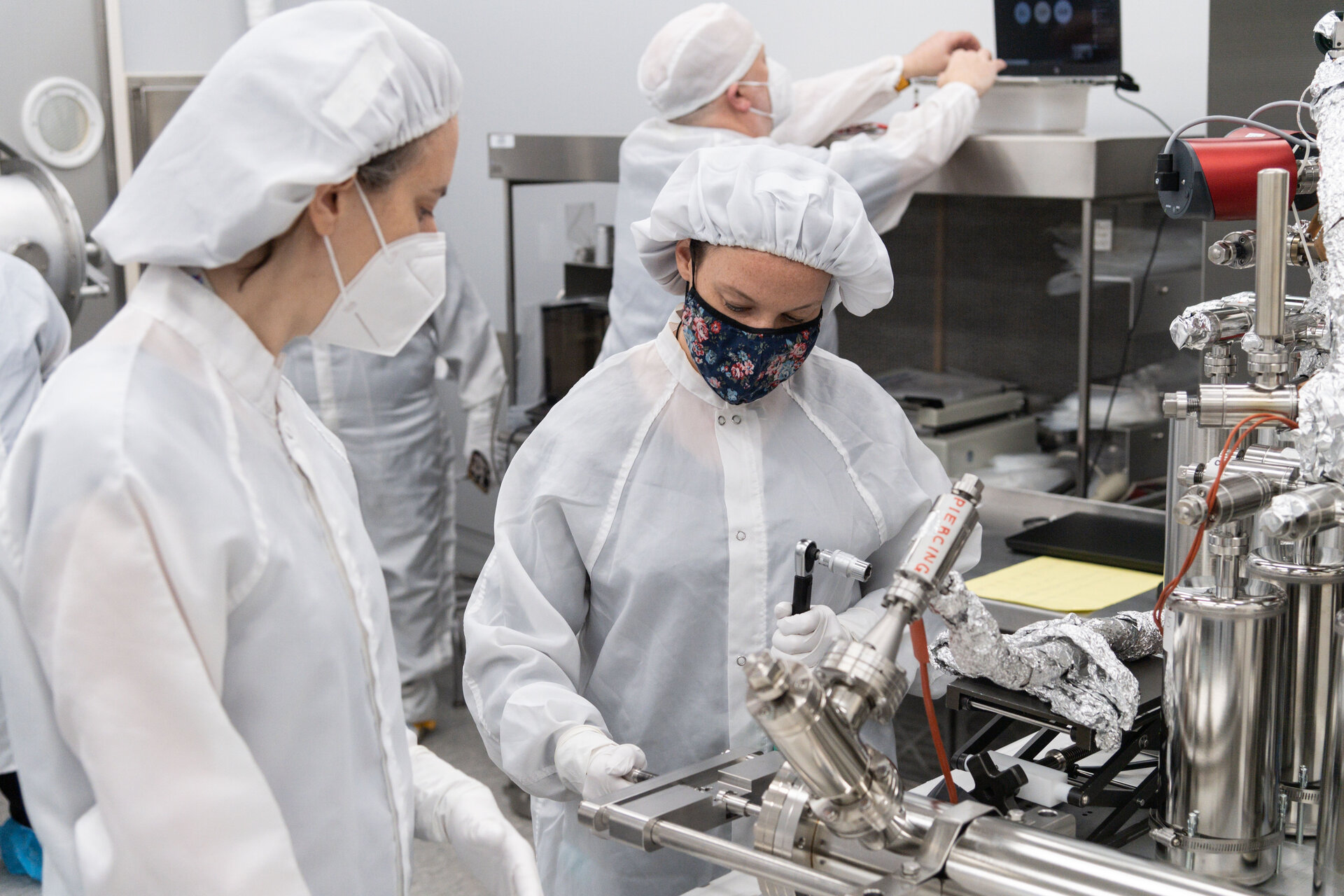Accept all cookies Accept only essential cookies See our Cookie Notice

About ESA
The European Space Agency (ESA) is Europe’s gateway to space. Its mission is to shape the development of Europe’s space capability and ensure that investment in space continues to deliver benefits to the citizens of Europe and the world.
Highlights
ESA - United space in Europe
This is ESA ESA facts Member States & Cooperating States Funding Director General Top management For Member State Delegations European vision European Space Policy ESA & EU Space Councils Responsibility & Sustainability Annual Report Calendar of meetings Corporate newsEstablishments & sites
ESA Headquarters ESA ESTEC ESA ESOC ESA ESRIN ESA EAC ESA ESAC Europe's Spaceport ESA ESEC ESA ECSAT Brussels Office Washington OfficeWorking with ESA
Business with ESA ESA Commercialisation Gateway Law at ESA Careers Cyber resilience at ESA IT at ESA Newsroom Partnerships Merchandising Licence Education Open Space Innovation Platform Integrity and Reporting Administrative Tribunal Health and SafetyMore about ESA
History ESA Historical Archives Exhibitions Publications Art & Culture ESA Merchandise Kids Diversity ESA Brand Centre ESA ChampionsLatest
Space in Member States
Find out more about space activities in our 23 Member States, and understand how ESA works together with their national agencies, institutions and organisations.
Science & Exploration
Exploring our Solar System and unlocking the secrets of the Universe
Go to topicAstronauts
Missions
Juice Euclid Webb Solar Orbiter BepiColombo Gaia ExoMars Cheops Exoplanet missions More missionsActivities
International Space Station Orion service module Gateway Concordia Caves & Pangaea BenefitsLatest
Space Safety
Protecting life and infrastructure on Earth and in orbit
Go to topicAsteroids
Asteroids and Planetary Defence Asteroid danger explained Flyeye telescope: asteroid detection Hera mission: asteroid deflection Near-Earth Object Coordination CentreSpace junk
About space debris Space debris by the numbers Space Environment Report In space refuelling, refurbishing and removingSafety from space
Clean Space ecodesign Zero Debris Technologies Space for Earth Supporting Sustainable DevelopmentLatest
Applications
Using space to benefit citizens and meet future challenges on Earth
Go to topicObserving the Earth
Observing the Earth Future EO Copernicus Meteorology Space for our climate Satellite missionsCommercialisation
ESA Commercialisation Gateway Open Space Innovation Platform Business Incubation ESA Space SolutionsLatest
Enabling & Support
Making space accessible and developing the technologies for the future
Go to topicBuilding missions
Space Engineering and Technology Test centre Laboratories Concurrent Design Facility Preparing for the future Shaping the Future Discovery and Preparation Advanced Concepts TeamSpace transportation
Space Transportation Ariane Vega Space Rider Future space transportation Boost! Europe's Spaceport Launches from Europe's Spaceport from 2012Latest

Pop goes the Moon
Thank you for liking
You have already liked this page, you can only like it once!
A satisfying, audible ‘pop’ marked a successful piercing of the sealed Apollo 17 sample container using the ESA designed and built piercing tool. The tool forms part of a gas sampling system with a gas extraction manifold, designed and built by Washington University St Louis, USA.
Francesca McDonald, science and project lead of ESA’s contribution to the Apollo Next-Generation Sample Analysis (ANGSA) programme, is pictured at the centre of this image with the piercing tool, which contains the pristine sample.
Francesca and colleague, Timon Schild, delivered the ESA piercing tool to NASA’s Johnson Space Center in late 2021 in preparation of the opening of the specially curated Apollo 17 core sample, which had remained sealed under vacuum since its collection in 1972 at the Moon’s surface by Apollo astronaut Gene Cernan.
The job of the tool, jokingly called the “Apollo can opener” amongst the team, was to puncture the Moon sample vacuum container in such a way as to aid capturing trapped lunar gases within.
This was successfully done in February 2022, with the fragile gases then collected in dedicated canisters via an extraction manifold designed by a partner team at Washington University in Saint-Louis, USA.
“The piercing tool was bespoke designed for this Core Sample Vacuum Container (CSVC),” explains Francesca. Even if it’s not used again, she notes that, “there are a lot of lessons learned that we can take for future exploration of the Moon and Mars.”
Combined science and engineering investigations are producing a set of findings on how well the CSVC performed and what can be learnt for improving the sample return chain in the future.
The gas sample canisters are being sent to specialised laboratories around the world, including within Europe, for detailed studies using highly sensitive mass spectrometry analytical techniques to learn about the origin and evolution of volatile species on the Moon and to understand the geologic history of the Apollo 17 landing site.
Follow up work is commencing to assess the full performance of the tool and to attain a set of lessons learned for future volatile-rich sample return, containment and gas sampling, which can inform Artemis and Mars Sample Return.
The gas extraction experiment is part of the larger Apollo Next-Generation Sample Analysis (ANGSA) programme that is coordinating the analysis of several pristine Moon samples from the Apollo era. And for the first time ever, ESA is involved in the opening of soil returned from the Moon.
-
CREDIT
NASA/James Blair -
LICENCE
ESA Standard Licence

Piercing tool for a Moon sample container

Apollo can openers

Piercing device

Moon sample 73002 dissection















 Germany
Germany
 Austria
Austria
 Belgium
Belgium
 Denmark
Denmark
 Spain
Spain
 Estonia
Estonia
 Finland
Finland
 France
France
 Greece
Greece
 Hungary
Hungary
 Ireland
Ireland
 Italy
Italy
 Luxembourg
Luxembourg
 Norway
Norway
 The Netherlands
The Netherlands
 Poland
Poland
 Portugal
Portugal
 Czechia
Czechia
 Romania
Romania
 United Kingdom
United Kingdom
 Slovenia
Slovenia
 Sweden
Sweden
 Switzerland
Switzerland

























